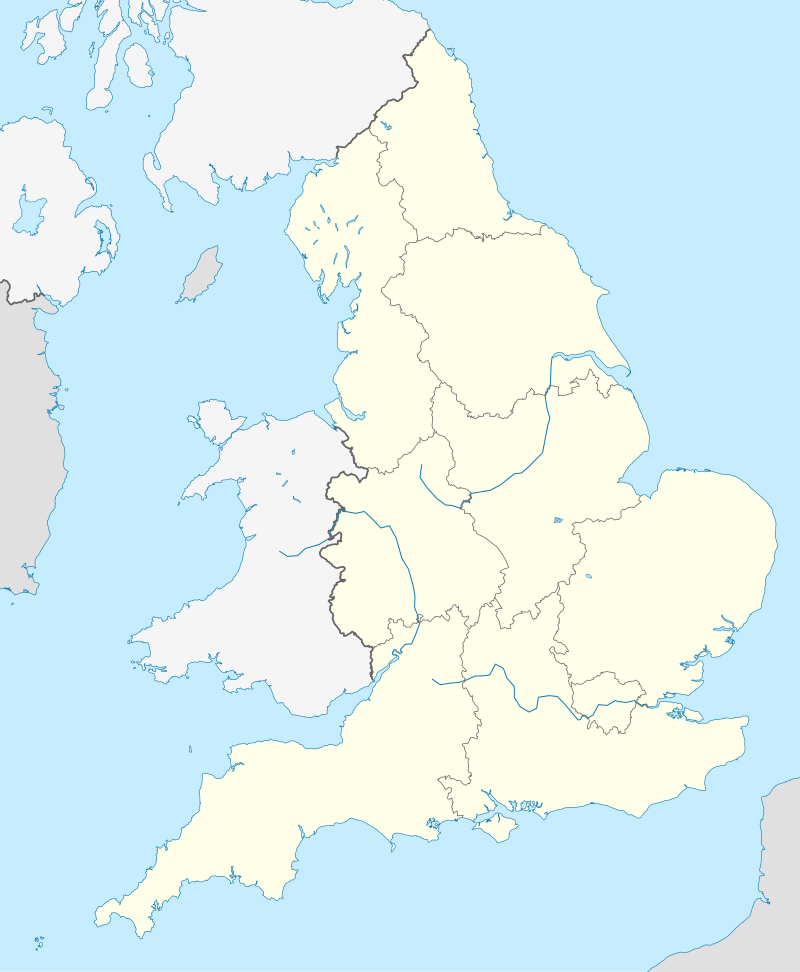FA Women's Championship
The Football Association Women's Championship is the second-highest division of women's football in England. The division was established in 2014 as FA Women's Super League 2 (WSL 2)
 | |
| First season | 2014 Replaced Premier League National as level 2 division |
|---|---|
| Country | England |
| Number of teams | 11 |
| Level on pyramid | 2 |
| Promotion to | FA Women's Super League |
| Relegation to | None (2014–2017) 2018–date: National League North National League South |
| Domestic cup(s) | |
| League cup(s) | FA WSL Cup |
| Current champions | Aston Villa (1st title) (2019–20) |
| Most championships | Aston Villa Sunderland Reading Yeovil Town Doncaster Rovers Belles Manchester United (1 title each) |
| Website | womenscompetitions.thefa.com |
WSL 2 replaced the previous level 2 division, the FA Women's Premier League (WPL) National Division, which ended after its 2012–13 season. The WPL's last national division champions, Sunderland A.F.C. Women, were also the first winners of WSL 2 in the 2014 season.
As well as Sunderland, other 2012–13 WPL clubs that joined WSL 2 in 2014 were Watford L.F.C. and Aston Villa L.F.C.. From 2014–2016, WSL 2 ran a summer-based season calendar before reverting to winter seasons from 2017–18.
FA WSL 2 was renamed the Women's Championship prior to the 2018–19 season.[1]
History

For the 2014 season the FA Women's Super League was expanded to create a second division with nine new teams added and one team being relegated from the WSL 1. WSL 1 remained as eight teams, with one new team inserted, with the WSL 2 having ten teams.[2][3][4][5] The new WSL 1 licence was awarded to Manchester City. Doncaster Rovers Belles were relegated to the WSL 2, with nine new licences awarded to London Bees, Durham, Aston Villa, Millwall Lionesses, Yeovil Town, Reading, Sunderland, Watford, and Oxford United.[6] Doncaster Belles appealed against their demotion, but were unsuccessful.[7]
In December 2014, the FA WSL announced a two-year plan to expand WSL 1 from an eight to ten-team league. Two teams will be promoted from WSL 2, while one team will be relegated to WSL 2.[8][9] Also, for the first time, a team from the FA Women's Premier League earned promotion to WSL 2, effectively connecting the WSL to the rest of the English women's football pyramid.[10]
This left WSL 1 with nine teams and WSL 2 with ten teams for the 2016 season, and with the process repeated the following year, both WSL 1 and WSL 2 consisted of ten teams each for the 2017–18 season.[8] In addition to being able to prove their financial solvency, clubs applying for entry to the WSL must show they will attract an average of 350 spectators in 2016, increasing to at least 400 in 2017.[11]
Clubs
The following eleven clubs are competing in the 2019–20 season.
|
 Aston Villa Crystal Palace Lewes Sheffield United Location of clubs for the 2019–20 season
|
Winners
| Year | Winner | Runners-up | Third | Top scorers | Goals |
|---|---|---|---|---|---|
| 2014 | Sunderland | Doncaster Rovers Belles a | Reading | Fran Kirby (Reading) | 24 |
| 2015 | Reading | Doncaster Rovers Belles | Everton | Courtney Sweetman-Kirk (Doncaster Rovers Belles) | 20 |
| 2016 | Yeovil Town | Bristol City | Everton | Iniabasi Umotong (Oxford United) Jo Wilson (London Bees) | 13 |
| 2017[lower-alpha 1] | Everton | Doncaster Rovers Belles b | Millwall Lionesses | Courtney Sweetman-Kirk (Doncaster Rovers Belles) | 9 |
| 2017–18 | Doncaster Rovers Belles c | Brighton & Hove Albion | Millwall Lionesses | Jessica Sigsworth (Doncaster Rovers Belles) | 15 |
| 2018–19 | Manchester United | Tottenham Hotspur | Charlton Athletic | Jessica Sigsworth (Manchester United) | 17 |
| 2019–20 | Aston Villa | Sheffield United | Durham | Katie Wilkinson (Sheffield United) | 14 |
Notes
Unless noted, teams in first and second were promoted to the FA WSL.
Attendances
In the 2014 season there were 251 fans at a WSL 2 match on average. In 2015 it increased to 341 with thirteen matches reaching attendances of more than 500 spectators.[12]
Notes
- The 2017 edition was known as the Spring Series and ran from February to May 2017.
References
- FA Women's Championship: New name chosen for England's second tier BBC Sport, 26 February 2018
- "FA WSL 2014: Applications". thefa.com. Retrieved 27 May 2013.
- "FA WSL 2014-2018 brochure". thefa.com. Retrieved 1 March 2013.
- "The FA WSL Club Development Plan". thefa.com. Retrieved 27 May 2013.
- "Clubs bid for WSL spot". thefa.com. Retrieved 27 May 2013.
- "FA Selects Clubs for WSL". WSL. Retrieved 17 April 2014.
- Baber, Mark. "Doncaster Belles lose appeal over demotion from Women's Super League". Inside World Football. Retrieved 17 April 2014.
- "FA WSL 2 promotion announcement". Faws1.com. Retrieved 18 December 2014.
- "BBC Sport – Women's Super League to be expanded from 2015". BBC Sport. Retrieved 18 December 2014.
- "Sheffield FC beat Portsmouth in Women's Premier League play-off". BBC. 24 May 2015. Retrieved 29 July 2015.
- "Katie Brazier: FA head of women's leagues targets WSL expansion". BBC Sport. 27 July 2015. Retrieved 17 August 2015.
- "WSL 2 attendances up 36% in 2015". shekicks.net. 21 October 2015. Retrieved 22 October 2015.